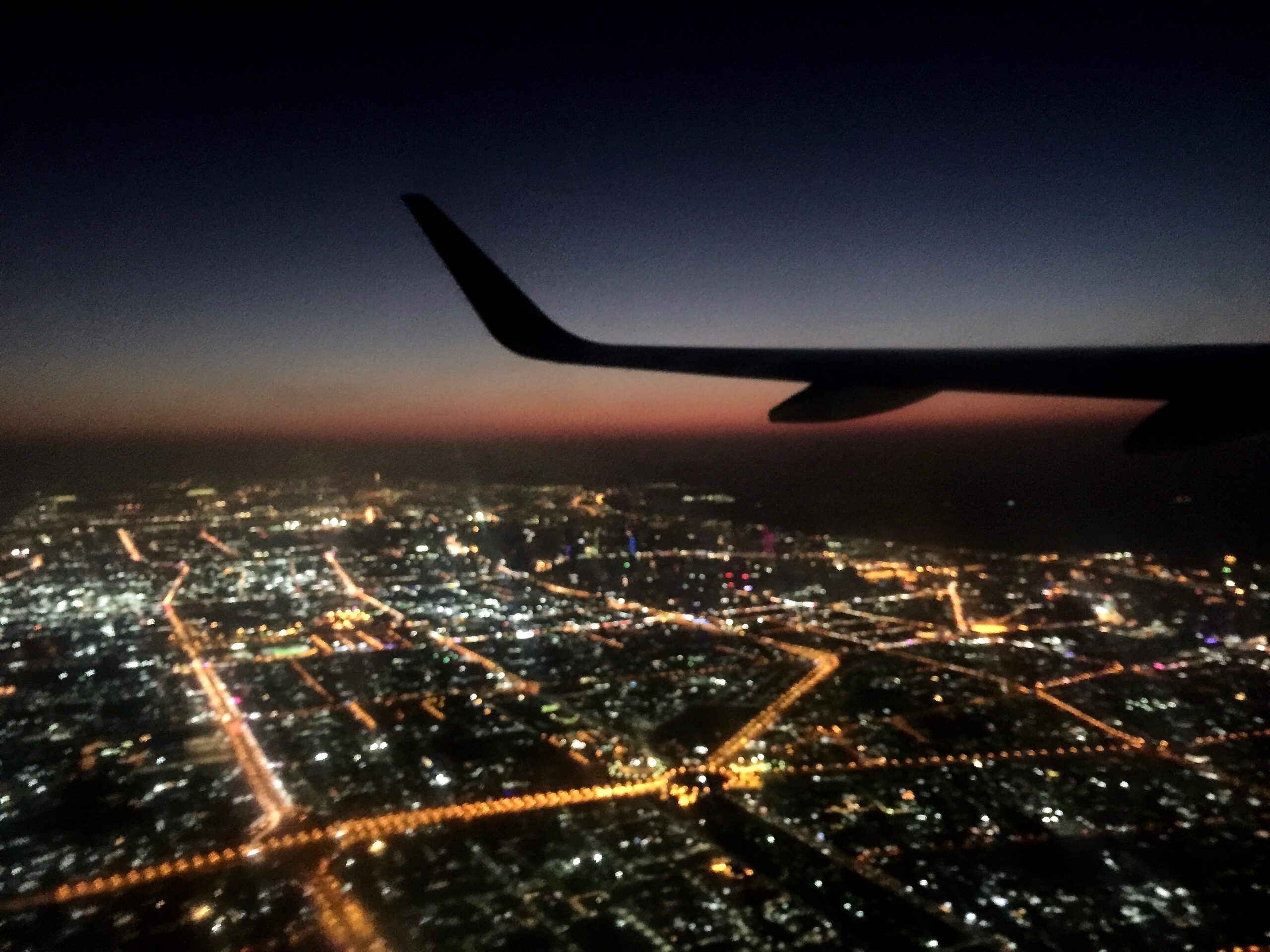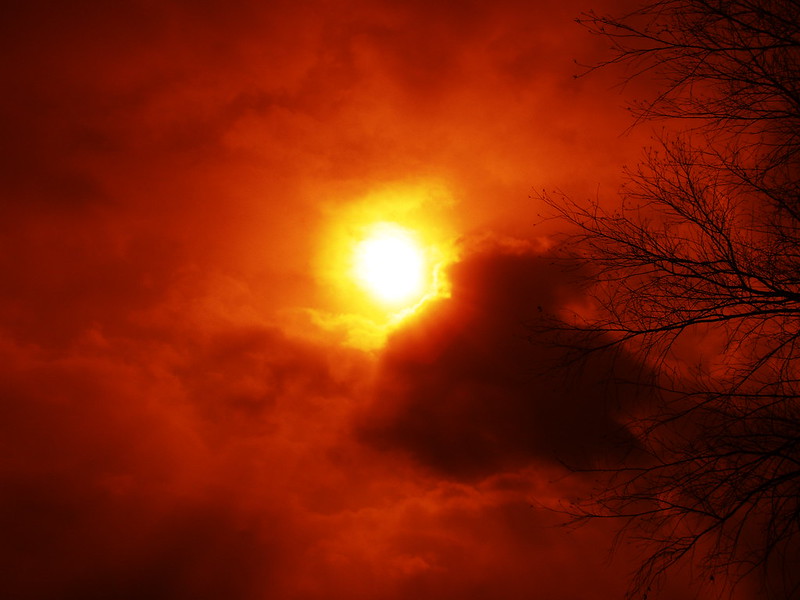By NOOR NAGA
I have dreamt of this Arabian Gulf Portfolio ever since I was a teenager, writing about snow and squirrels and picket fences—despite living in Dubai where I had more experience with temperatures of 40+ degrees, karak chai, compounds… Because English was my first language, the fiction that was available and accessible to me at the time was perpetually happening elsewhere. My high school education focused on the British and American canons, meaning that we had no exposure to global Anglophone literature, let alone any works set in the United Arab Emirates. The bookshops sold mainly self-help and cookbooks in the 2000s. The public libraries were few, poorly stocked, and dominated by Arabic literature that was also generally quite dated. Consequently, for most of my teenage years, my imagination was furnished by foreign clutter and peopled by strangers I had no knowledge of first-hand. There was the book-world and there was the real-world, and I didn’t even appreciate how separate they were in my mind until I began to write about rivers and forests and realized there were none around me. The mimetic dimension of literature had been severed entirely.
I was seven years old when my father moved our family from Charleston, South Carolina, to Dubai in the hopes of raising his family in the Arab world, with Islamic values. It is difficult to explain to someone who has never visited Dubai what it was like in the late 90s when we first arrived. My father often used to say that the entire country had an airport-feel. He meant that it was international in the ubiquitous way that airports are—people from every corner of the earth passing through on their way elsewhere, jostling against one another, each in their own style, wearing their back-home dresses, speaking their own languages, eating their own foods. In the last few years though, I’ve often thought my father’s metaphor of Dubai as an airport to be apt for other reasons. An airport is a temporal rather than spatial designation. An airport is not a place, but an interim, experienced in hours rather than architecture. An airport is a time of waiting. Likewise, in the Arabian Gulf, there is an expectation that most of its residents are only passing through, here today, gone tomorrow, on to real things in realer places. This is the case even if they have been born in the region, have come from nowhere and have nowhere to go.
Although Oman and Saudi Arabia have been self-governing since the 1740s and 1920s respectively, the other four Gulf states were British Protectorates until very recently. Kuwait gained independence in 1961 and the UAE, Qatar and Bahrain in 1971. Labor migration to the Arabian Gulf has a long history predating the discovery of oil, but the region experienced its biggest influx beginning in the “oil decade” (1973-82), during which the number of foreign laborers more than tripled, reaching almost 4.4 million by 1985. By 1999, when my own family arrived, this number had risen to 7.1 million, and by 2008 it had reached 10.6 million, with foreigners making up 65% of the Gulf’s workforce. The total population of foreigners in the region was even higher, however, since many of these laborers migrated accompanied by family members.[1] For the most part, these countries do not allow for a naturalization process by which migrants can gain citizenship, and the result is that today the majority of their inhabitants are expats—outnumbering the indigenous population in some cases by 85%.
To remain a guest in a country no matter how long you live there is to feel disposable and temporary, but also liberated from the responsibilities of patriotism. You are likely to move and keep moving. Since leaving Dubai in 2010, I’ve lived in Toronto, Alexandria, Cairo, and very briefly New York City, but I’ve returned to Dubai at least twice a year. One way of trying to understand my relationship to this city where I spent my formative years—and perhaps to all cities, to mythologies of nationhood and citizenship, to mobility, belonging and desire—has manifested in a search for emerging narratives from the Gulf. For years I’ve wanted, if only for selfish reasons, to bring authors to my bookshelf who reflect my own third culture experience. And I did find them, eventually.
Arabic literature from the region has been available for decades. In his review of the Saudi novelist Abdel Rahman Munif’s 1984 Cities of Salt, Amitav Ghosh famously coined the term petrofiction to describe this emerging body of literature dramatizing “oil encounters” between countries that extract oil and those that consume it. Cities of Salt is a novel that engages earnestly with the threats of technological advancements, modernization, and immigration that American imperialism impinge on the Saudi way of life, and it remains one of the most foundational pieces of postcolonial literature documenting the region’s transformation. Other notable early works that explore the migrant experience include Palestinian author Ibrahim Nasrallah’s 1985 Prairies of Fever and Egyptian author Ibrahim Abdelmaguid’s 1997 The Other Place, both of which are set in Saudi Arabia, as well as Kuwaiti writer Taleb Alrefai’s 1988 novel The Shadow of the Sun, which is set in Kuwait.
Apart from Arabic literature, there is also a smattering of works from the region written in other languages, like Malayali, and sometimes available in translation. But easily the most accessible and commercially successful books are in English—which has become the unofficial lingua franca in many of the Gulf metropolises. For migrants from the Global South in particular, English is useful for vertical, as well as horizontal, mobility, and this is especially pronounced in a region where the hyper-diversity of populations often makes it necessary for cross-cultural communication. But what does it even mean to talk about Anglophone literature from the Arabian Gulf? In attempting to compile a small body of literature for this portfolio, we’ve come up against many questions about the potential parameters of this budding canon.
Does the content of the work need to address the region explicitly, for example? Or is it enough if the author of the work merely lives there? What about authors, like myself, who once lived there but no longer do? Would it matter if we were citizens or not? Do migrants even have a claim to this budding canon, given the likelihood that we will not stay long-term or assimilate? If a certain length of residency is required, how long is long enough? It seems intuitive that a novel set entirely in Cairo by an American tourist visiting the city would never be considered Egyptian literature. And yet, with regards to the Arabian Gulf, it’s trickier to make the same case since transience is a fundamental quality of the space. In a region where the majority of the population are outsiders, merely passing through, do questions of authenticity become irrelevant? Is the literary Gulf just a free for all?
It is perhaps because of all these soft, hazy boundaries that a body of Anglophone literature from the region has been slow to coalesce. The earliest published work I know of personally is the American novelist Robin Moore’s highly sensationalist 1976 thriller Dubai, written after the author’s brief visit to the city. Although it is officially banned in the United Arab Emirates, secondhand copies are easily available. In what one reviewer called “Lawrence of Arabia of the 60s/70s,” this novel features a disgraced American soldier’s misadventures with gold-smuggling, oil deals and romance in Dubai in the days before independence, when it was still a British Protectorate. In the same vein as Moore’s novel, there is a whole slew of fiction published largely in the last two decades by writers who have never lived in the Gulf for any substantial length of time—and it shows.
Dave Eggers’s 2012 A Hologram for the King and Joseph O’Neill’s 2015 The Dog, are both written with a similar orientation to a western audience and thus catered to and shaped by the imagined expectations of that market. In both of these novels, the protagonists are depressed Americans—a salesman and a financial analyst—at the lowest points in their respective careers, marriages and lives, who accept jobs in the Gulf as a desperate last resort to redeem themselves by starting over somewhere new. Far from being a golden opportunity, their experiences in the region are marked by lethargy, bewilderment and alienation. O’Neill’s description of Dubai and Eggers’s description of some unnamed part of Saudi Arabia are exoticizing at best, often involving the convergence of extremes for shock value.
In novels like these, the flashy futuristic architecture—towers of glass and steel, megamalls, highways—is pinned against a primitive desert backdrop, a barren wasteland of rolling sands and backwards customs in what O’Neill calls an “abracadabrapolis.” Symbols of religious conservatism are often paired with scenes of sexual debauchery and moral depravity. The governing bodies of the Gulf are portrayed as unruly children, petty and short-sighted, subject to whims that are not only beyond accountability, but beyond rationality. Flagrant displays of wealth and superficiality are contrasted with poverty and quasi-slavery in a wealth gap that is deemed exceptionally evil, rather than part of a global trend resulting from all kinds of capitalist and geopolitical forces.
It’s not that I don’t believe in one’s ability to research a foreign landscape well enough to represent it in fiction, but I do think some prolonged measure of contact and first-hand experience is necessary for avoiding reductionist narratives. In general, novels like these promise to draw back the veil and reveal secrets about a faraway place to people who’ve never been there. The implied audience is a Western one, and these works feed into the fantasies and clichés already perpetuated in the West about the Arabian Gulf without seriously examining them. These novels speak with the authority of spies. The tone is gossipy, conspiratorial, as in: you won’t believe what I’m about to tell you. Personally, I find it hard to look past the voyeuristic intentions in these works. I find them cringeworthy and boring. But I also hesitate to describe them as illegitimate because of how slippery that slope can be in a region where most people are newcomers of one kind or another, discovering at their own pace, in their own way, what a space like the Gulf can be.
Over the last two decades, however, many more intimate representations of the region have splashed onto the scene. In Randa Jarrar’s 2008 semi-autobiographical novel, for example, the teenaged Nidali, whose father is Palestinian and whose mother is half-Egyptian, half-Greek, is on a rollercoaster of self-discovery as her family migrates from Kuwait City to Alexandria, and finally to Texas, following the Gulf War. With every move, the spunky tri-racial protagonist struggles to assert her authenticity against a constantly shifting landscape of gendered and racial expectations. In a short story[2] from Mia Alvar’s 2015 collection In the Country, a Filipina special needs teacher named Sally is employed to look after a five-year-old Arab girl in Bahrain who suffers from severe mental disabilities. Despite how obvious it is to Sally that her student will never acquire language or live even a semi-independent life, she continues to feed the mother delusions of progress and possibility for an exorbitant fee. Her capitalization on the Arab mother’s wealth and naivety is counterbalanced by larger instances of racialized inequality and exploitation of Filipino laborers like Sally’s husband.
Then there is Deepak Unnikrishnan’s groundbreaking novel Temporary People, which won the Restless Books Prize for New Immigrant Writing and was published in 2017. This collection of linked vignettes, prose poems, and short stories challenges not only our grasp of realism, but also of linearity, continuity, and permanence. In this dark experimental novel set primarily in Abu Dhabi, an Indian laborer turns into a suitcase, a “Mushtibushi” elevator kidnaps and molests children, a cockroach dresses itself in boots and pants—nothing is quite what it seems. All three of these works by Jarrar, Alvar, and Unnikrishnan explore the migrant experience in ways that resist falling into simplistic binaries and, instead, complicate our notions of transience and belonging, of victimhood and oppression, of race and class. And in doing so, they are paving the road for new narratives of ownership by non-citizens.
The last decade has also ushered in a lot more commercial nonfiction about the region. In her 2012 memoir, The Girl who Fell to Earth, biracial author Sophia Al Maria recounts her journey coming of age among her father’s Bedouin family in Qatar after being sent there by her American mother. In 2013, the Ugandan writer Yasin Kakande published his exposé The Ambitious Struggle, which describes the racism and media censorship he encountered while working as a journalist in Dubai. And more recently, in 2018, the American writer Rick Sneder’s memoir 3001 Arabian Days chronicled his family’s life in the Aramco Company town of Dhahran from 1953-1962. There is also a nascent poetry and spoken word scene, concentrated in the UAE, which includes Palestinian poet Hind Shoufani, whose collection Inkstains on the Edge of Light was published in 2010, and Lebanese poet Zeina Hashem Beck, who since 2006 has lived in Saudi Arabia, Bahrain, and most recently the Emirates. Her award-winning collections To Live in Autumn (2014) and Louder than Hearts (2016) have been wildly successful globally.
For writers who currently reside in the Arabian Gulf or who make it explicitly the subject of their work, it’s relatively easy to consider them part of a regional body of literature. But because of the transient nature of the region and how migration policies can compromise any feelings of belonging towards it, there are also many new and former residents whose relationship to the Gulf is unclear. Celebrated authors such as Fady Joudah, Sulaiman Addonia, and Rabih Alameddine, who spent years of their childhood or adolescence in the Gulf, often don’t position themselves as from the Gulf or write explicitly about it (though of course sometimes they do). The same thing goes for authors who have only recently arrived to the region with full-fledged careers in their countries of origin. How long before their work joins the regional conversation? Do they even want a part in it? Over the course of working with the wonderful Jennifer Acker on this Arabian Gulf Portfolio it has only become clearer that any attempt at fixed criteria here is useless.
In the original call for submissions, we had invited works of fiction, nonfiction, and poetry by migrant voices specifically because we were interested in themes of millennial nomadism, civic detachment, and pliable identities. Rather than being divided in the classic diasporic model, caught between two distinct cultures and equally marginalized in each, the Gulf has birthed an entire generation of third-culture kids without any of the privileges or protections of citizenship there. In our earliest conversations about this issue, we expressed wanting to honor voices whose claim to the region is legally and economically tenuous by providing a space where they might speak to each other. What we didn’t account for was just how blurred and unhelpful the categories of migrant/citizen could be.
As soon as we opened submissions, we received a number of questions from writers who weren’t sure if they qualified, but who felt they had something important to contribute. This included many citizens who felt equally third-culture and transient, whether because they were of mixed race or foreign ancestry (such as those with Ajami, Zanzibari, or Balochi roots) and have their own struggles against discrimination, or because their relationship to the Gulf was compromised in some other way. There are many emerging Bidoon writers, for example, who are born in the Gulf but who are legally stateless and do not enjoy the protection of citizenship in any country. There are also many indigenous writers who become migrants themselves, like the Kuwaiti poet and oral historian Rasha Alduwaisan, who lives in Dubai, or the Bahraini poet Ali Al-Jamri who is based in London. Moreover, many of the same barriers to publishing, like the dearth of English publishing houses and platforms—which was a motivating force behind this portfolio—are shared by everyone in the region.
Once we’d acknowledged just how ambiguous our original designations of migrant/citizen were, the decision to expand the perimeters of the portfolio was fairly quick and has resulted, I believe, in a much richer collection that we hope will inspire many more of its kind. The works included are eclectic and embody a wide range of perspectives, but they all engage seriously with what it means to be a body uncomfortable in space: to be outside looking into, or inside looking out of, the Arabian Gulf; to be invisible or hyper-visible; to be trapped or forced to move, continuously, like an outlaw. They speak to each other across all kinds of divides. “There are no windows in the room where I am allowed,” says Natasha Burge in her poem. “My dream of leaving the country was as old as my body,” Mona Kareem echoes. But Priyanka Sacheti, who has left, and in fact cannot return, says, “Where do I go now?”
The bodies in this portfolio lock themselves in bedrooms and let pools of urine trickle out from under the door. They stand in lines waiting to be let inside a country. Or they float unhappily, further and further, like helium balloons. These bodies joyride late at night. They carry rocks in their pockets. They carry pickled turnips. These bodies are itching themselves to death or else they are on fire. They want to touch each other. The spaces they can enter or exit are printed on bits of paper: passports, visas, travel documents. These bodies want permission. They want to be heard when they speak, but also not to have to speak. They want to be intelligible without speaking. To belong to the spaces that belong to them.
We hope you will meet them where they are.
Noor Naga is an Alexandrian writer who was born in Philadelphia, raised in Dubai, studied in Toronto, and now lives in Cairo. Her verse-novel Washes, Prays, which won the Pat Lowther Memorial Award and an Arab American Book Award, was published by McClelland & Stewart in 2020. Her debut novel If an Egyptian Cannot Speak English won the Graywolf Press Africa Prize and is forthcoming in April 2022 from Graywolf Press. She is the co-editor of the Arabian Gulf Portfolio.
[1] “Labor Migration to the GCC States: Patterns, Scale, and Policies” Onn Winckler https://www.voltairenet.org/IMG/pdf/Migration_and_the_Gulf.pdf
[2] Alvar, Mia. “The Miracle Worker,” In the Country, 2015.




